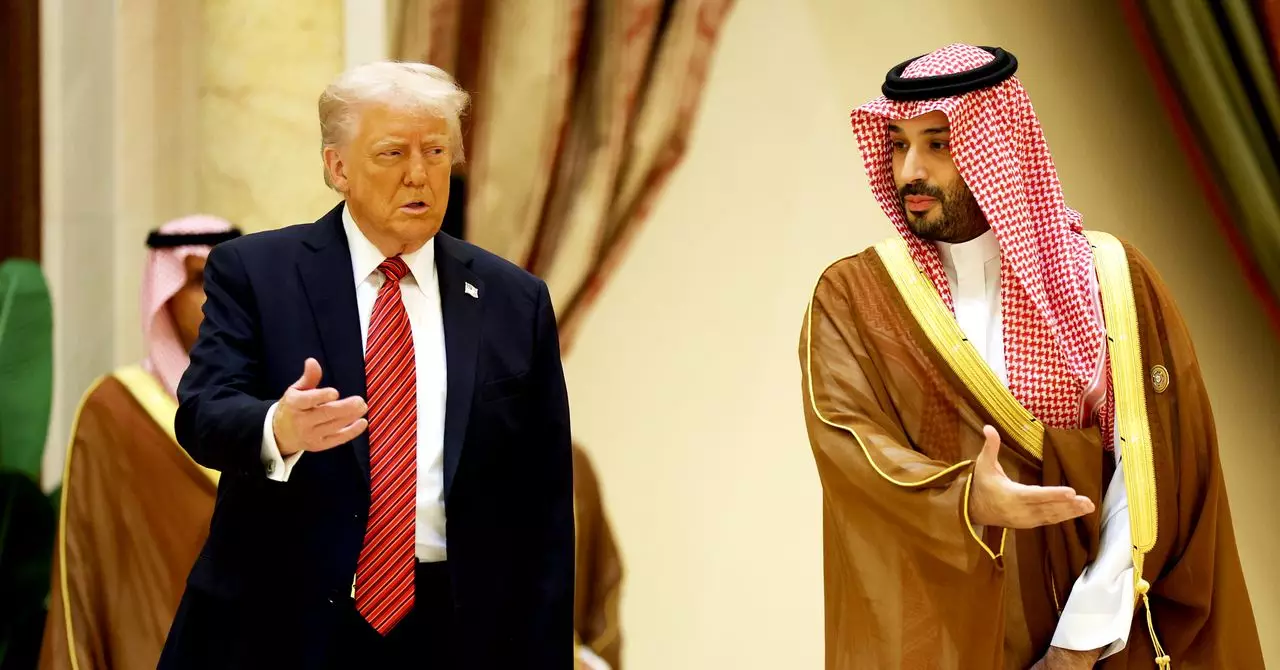In a landscape marked by rapid technological evolution, the recent trip of Donald Trump to the Middle East stands out as a pivotal moment for artificial intelligence (AI) development. This jaunt, complete with a lavish entourage of tech billionaires and military spectacle, represents much more than just political posturing. It’s a substantial move to reshape the global tech ecosystem, linking the United States with burgeoning powers in the Middle East, particularly the United Arab Emirates (UAE) and Saudi Arabia. Trump’s announcement of a partnership involving an unparalleled AI datacenter in the UAE underscores the need for collaborative investment in AI, aiming to create vast computing capabilities for an industry that thrives on data processing and analytics.
The geopolitical implications of this development are monumental. By facilitating partnerships between U.S. tech companies and regional players like G42, Trump aims to fortify the Middle East’s status as an emerging hub for AI innovation—thereby shifting the balance of tech power. Sheikh Tahnoon bin Zayed Al Nahyan’s vision of leveraging a considerable fortune to boost the UAE’s AI capabilities exemplifies a larger strategy that seeks to harness technology for economic diversification away from oil dependency and position the country as a leader in technological advancement.
Saudi Arabia’s Ambitious AI Aspirations
As Trump mingled with VIPs in Abu Dhabi, Saudi Arabia was launching Humain, an AI investment entity backed by the Public Investment Fund. This initiative, marked by partnerships with industry giants like Nvidia and AMD, aims to cultivate a self-sustaining AI ecosystem within the kingdom. These partnerships are not merely transactional. They signify a strategic maneuver to place Saudi Arabia firmly on the global tech map, opening pathways for collaborations that promise to enhance its infrastructure capabilities.
The scale of the agreement with Nvidia is particularly striking. The promise of 500 megawatts of AI computing capacity, facilitated by hundreds of thousands of advanced GPUs, positions Saudi Arabia to create breakthrough AI models that could rival established leaders in technology. Such moves echo the kingdom’s Vision 2030 initiative, which seeks to modernize and diversify its economy, pivoting toward tech-driven solutions while remaining cruely aware of its strategic position amid the U.S.-China tech rivalry.
A Geopolitical Chess Game
The tech arms race is not just about innovation; it’s about strategic power. The deals forged during this tour highlight a fascinating intersection of capital, technology, and diplomacy. As the U.S. seeks to maintain its influence in the region, nations like Saudi Arabia and the UAE are looking for opportunities to bolster their technological capabilities in a long-term, sustainable manner. This dynamic suggests a precarious position for these countries, which possess both an ambitious vision and the financial resources to execute it, yet find themselves entangled in a geopolitical rivalry between two superpowers—China and the U.S.
Importantly, as Trump’s administration moves to relax restrictions on the sale of cutting-edge chips, this decision may rejuvenate American competitiveness in the region’s tech landscape. The prior regulatory framework, which seemed focused on containing the technological ascent of countries like Saudi Arabia and the UAE, now appears outdated. The decision to open up chip sales, previously seen as an attempt to stifle competition from Chinese technology, now reflects a broader recognition of the importance of U.S. engagement in global AI infrastructure development.
The Future: A Cautious Optimism
As transformative as these partnerships may appear, they are juxtaposed against a backdrop of caution and complexity. Saudi Arabia and the UAE’s existing partnerships with Chinese tech firms complicate their relationships in the U.S.-led tech ecosystem. With a vast influx of investment flowing into the region, lucrative possibilities for innovation exist. However, these opportunities are mired in the complexities of international relations. Potential friction points, especially concerning intellectual property rights, labor practices in tech, and ethical considerations surrounding AI deployment, remain significant.
The infusion of capital and advanced technology might lead to groundbreaking advancements but could also exacerbate the existing dichotomies in the global distribution of technology and wealth. This scenario beckons a finer balance of sensibility and strategic foresight, raising questions about the governance and ethical ramifications of AI use in the context of these partnerships.
While the ambitious ventures birthed from Trump’s Middle East trip present unmatched opportunities, they also pose critical challenges that must be approached with responsible foresight and ethical considerations. Building robust AI capacities is not merely about competition; it’s about fostering inclusive innovation that serves humanity’s best interests. The tech giants and their Middle Eastern counterparts must work collaboratively to ensure that the future of AI is not only technologically advanced but also ethically sound and universally beneficial.


Leave a Reply